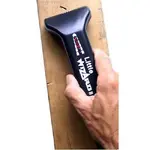I am just about 8 months into detecting and let me tell you what I have learned.
As mentioned earlier, the better you get with your detector, the less you need a separate pin pointer. In the beginning, I would dig up a huge plug and half the time the find would still be in the hole. With a few months practice, plus reading my instructions and practicing, I can usually dig a small plug and the fine will be in the plug. So at that point, if I know the find is in the small plug, I may not need a separate pin pointer. It can help to verify the find is in the plug but you can also wave the plug in front of your coil and do that.
I have a whites Bullseye, the knock off version of this from Harbor Freight, and the new Pistol Probe. The Pistol probe will give you a max of maybe 5 or 6 inches. If you're waving it over some loose dirt you just scooped out of the hole, it may sound off because there's a target still in the ground 5 inches under the loose dirt you just waved it over, so that's not very helpful. But if you use a pin pointer with only a inch or so of range then you could verify a target in the loose soil you just dumped on the ground.
So range on a pin pointer depends on how you are going to use it. We dug some 6 or 8 inch holes and the pistol probe says there's still something in the hole, it could mean you've got another 6 inches to dig or perhaps you missed the target completely and it's 6 inches west of where you just dug. So greater range doesn't necessarily help you.
On coin size objects and good technique, you should just be able to dig a plug and the target will be in the plug. Small plugs are easy to break apart and find your treasure. I take the Bullseye and Pistol probe with me but I usually just end up using the Bullseye. Brown coins look like dirt so it can make it easier to find the rascal.
Optic




